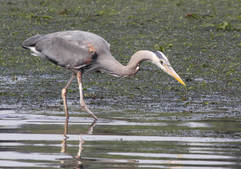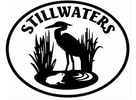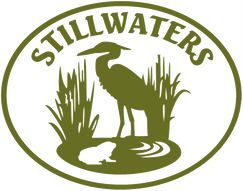Birds

Everybody knows what birds are: they are the animals that live in nests, fly around, lay eggs, and eat worms. This definition isn’t strictly true, though. Scientifically, there are several different ways to classify or characterize “birds”. We can say that they are the animals that can fly, the ones that have feathers, or even that they are animals that would be classified as crocodiles if the classification of “bird” didn’t exist. Birds first appeared in the fossil record during the Cretaceous period (about 120 million years ago) and are related to the dinosaurs of the period.
In an ecosystem, birds may serve many different purposes. Sometimes we may see the inclusion of certain insect species in an area they wouldn’t normally call home, and they may have a negative effect on this area; certain species of bird will help by consuming some of these insects and cutting down their numbers. Other birds help spread around seeds (birds have beaks instead of teeth, so if they consume a seed, they can’t chew it up; it passes through their system and is dropped at some point later on in the bird’s poop). They can also help pollinate plants by brushing up on several, allowing the pollen to attach to their feathers and get dropped off at the next plant.
Noisiness is another classic characteristic of birds. Many species use calls and songs to communicate for a variety of reasons (looking for a mate, warning about a predator, claiming territory, looking for others, etc.). A few species use different techniques to communicate. Woodpeckers may drum with their beaks, so they aren’t always looking for food when they make incredible noise. Another species of bird will use tools to drum instead of their beaks.
Birds are incredibly popular because of their variety of colors, sounds, and activities. In Kingston, bird watching is a popular hobby, but you don’t have to be an avid bird watcher to spread your wings and briefly dip into the activity. To help you out, here are several common species of bird (in order of probable rarity) to watch for while in Kingston and a few features about each of them.
If you'd like a small preview of what any given bird looks like, hover over its name.
In an ecosystem, birds may serve many different purposes. Sometimes we may see the inclusion of certain insect species in an area they wouldn’t normally call home, and they may have a negative effect on this area; certain species of bird will help by consuming some of these insects and cutting down their numbers. Other birds help spread around seeds (birds have beaks instead of teeth, so if they consume a seed, they can’t chew it up; it passes through their system and is dropped at some point later on in the bird’s poop). They can also help pollinate plants by brushing up on several, allowing the pollen to attach to their feathers and get dropped off at the next plant.
Noisiness is another classic characteristic of birds. Many species use calls and songs to communicate for a variety of reasons (looking for a mate, warning about a predator, claiming territory, looking for others, etc.). A few species use different techniques to communicate. Woodpeckers may drum with their beaks, so they aren’t always looking for food when they make incredible noise. Another species of bird will use tools to drum instead of their beaks.
Birds are incredibly popular because of their variety of colors, sounds, and activities. In Kingston, bird watching is a popular hobby, but you don’t have to be an avid bird watcher to spread your wings and briefly dip into the activity. To help you out, here are several common species of bird (in order of probable rarity) to watch for while in Kingston and a few features about each of them.
If you'd like a small preview of what any given bird looks like, hover over its name.
| Bird | Color | Size and Shape | Behavior |
|---|---|---|---|
| Swallow (common) | White belly; greenish-bronze and violet back | Small, sleek; long, pointed wings; short, forked tails | Flying over water; consuming flying insects; perching on branches/wires; social, occur in groups |
| Canada Goose | Black head, white cheeks and chin; black neck, tan breast, brown back | Large body; long neck; large, webbed feet; wide, flat bill | Sitting in water, grazing in fields; fly in pairs or groups |
| Barn Swallow | Steely blue back, wings, and tail; reddish-orange belly | Slightly flattened head, no visible neck while perching; long, forked tail | Perching; rarely glide, flap their wings often; mix flocks with other species |
| Cedar Waxwing | Pale brown head and chest; soft gray wings; pale yellow belly; gray tail with yellow tip; black “mask” face | Medium sized, sleek body; large head, short neck; short, wide bill; broad wings; short, squared tail | Social birds, often in flocks year round; perching in trees; flying over water searching for insects |
| American Robin | Orange belly, dark heads; gray-brown body | Large songbirds (still fairly small); round body; long legs and tail | Not very social; standing tall, beak tilted up; survey their environment often |
| Mourning Dove | Light brown/gray; black spots on wings and black-bordered tail feathers | Large and round body; long, pointed tail; short legs, small bill, small head relative to body | Flying fast and flapping often; sudden changes in flight are common |
| Black-capped Chickadee | Black head and upper chest, white cheeks, grayish back and wings | Tiny bird; short neck; large head; round body shape; long, narrow tail; short bill | Often associate in flocks; fly one at a time even in flocks across roads and open fields |
| Brown-headed Cowbird | Males: glossy black body and tail with a brown head Females: fully brown, lighter brown on head and underparts | Relatively small blackbirds; short tail, thick head; short, thick bill | Eat on the ground in mixed-species groups; males gather on lawns, display for females; noisy birds |
| Band-tailed Pigeon | Blue-gray back; purplish-gray belly; gray tail and wings; yellow bill and feet | Large body; small head; long, rounded tail; thick based, pointed wings | Travel in groups searching for food; somewhat noisy |
| Red-winged Blackbird | Males: mostly black; red-and-yellow shoulders Females: dark brown; paler breast; whitish eyebrow | Broad-shouldered; slender, conical bill; medium-length tail; medium size overall | Males are very noisy and try to get noticed; females spend more time looking for food and building nests, much quieter |
| Song Sparrow | Brown back, whitish chest | Medium sized; round and bulky body; short and stout bill; round head; long and rounded tail; broad wings | Hover through low, dense vegetation/branches; sometimes move to ground for food; short flights |
| Bald Eagle | White head and tail; dark brown body and wings; yellow beak and legs | Quite large; large body and head; hooked bill; large, flat wings | High flyers; hang out in trees or on the ground; like to eat fish but will also hunt smaller mammals |
| Osprey | White belly, neck, top of head; brown face/cheeks; brown body and wings; while young, body has white spots | Large overall; relatively thin body; long wings, while flying have a corner that makes the bird look like the letter “M” | Nests in dead trees or on poles near water; fly above shallow water to hunt fish, carrying their catch back to the nest |
| American Crow | All black | Large; long legs; thick neck; heavy, straight bill; broad, rounded wings; short, rounded or squared tail | Very social, enormous flocks; intelligent and curious; aggressive and noisy |
| Dark-eyed Junco (rare) | Dark gray or brown overall, slightly pink bill, some white tail feathers | Small bird (medium size for a sparrow); rounded head; short, stout bill; long tail | Hang out on the ground, hop around looking for seeds; somewhat noisy; short, low flights |

